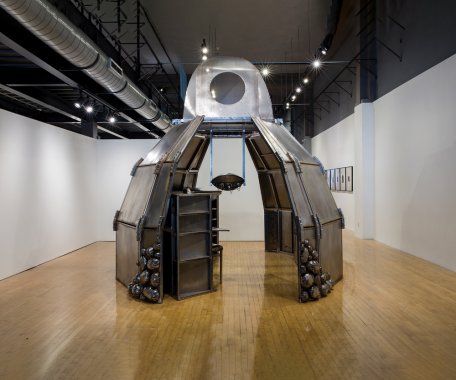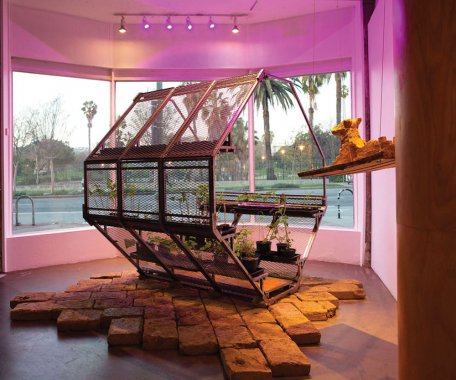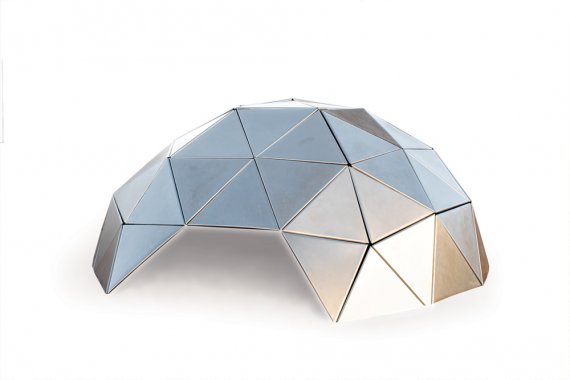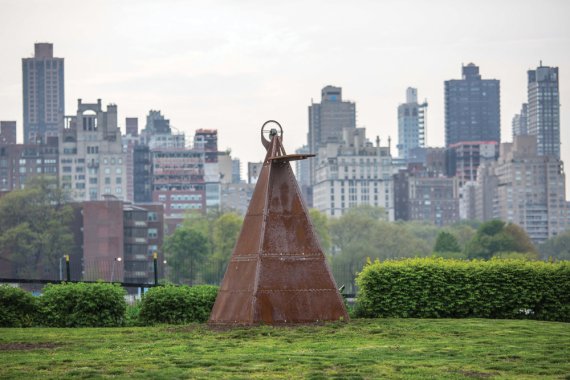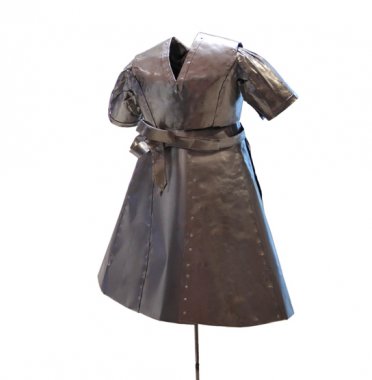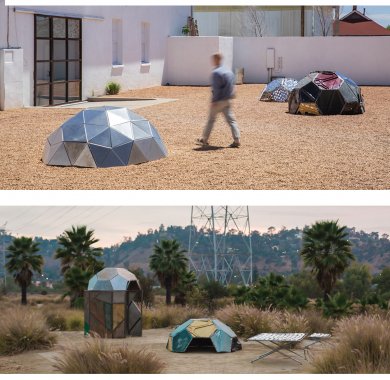Imagining New Worlds
Imagining New Worlds
Last year, sculptor Beatriz Cortez exhibited a set of outdoor works in the shape of geodesic domes in Marfa, Texas – the hallowed ground of sculptors Donald Judd and John Chamberlain. She crafted one from steel bars, chain link, and folded strips of Mylar. For Cortez, these utilitarian materials called to mind the sheds and workshops of Los Angeles, where she lives, but also the experience of children in the border detention camps nearby.
Conceptually, her pieces are rich and complex. When Cortez builds sculptures from sheets of metal, for instance, she reflects both on ecological disaster scenarios in which metal outlasts all other organic materials and on the philosophy of French theorists Gilles Deleuze and Félix Guattari, who viewed mining and metalworking as a metaphor for opening up other dimensions and making new worlds.
When Cortez uses plastic zip ties to fasten panels of metal or mirrored glass, she imagines them as stitches binding fabric, and flashes back to her childhood in San Salvador, El Salvador, where her second-grade teacher demanded perfect embroidery stitching of her. But zip ties are also used as fasteners aboard space capsules, a fact that resonates with Cortez’s interest in cosmology and speculative fiction.
“When I’m making a work, I bring together all these lives that I inhabit,” she says.
When Cortez was 18, civil war in El Salvador forced her to leave home in haste and emigrate to the US. She went on to study literature and Latin American history, earning a doctorate at Arizona State University, and now teaches in the interdisciplinary Central American Studies department at California State University, Northridge. But the academic, who earned an MFA at California Institute of the Arts in 2015, has always been an artist, too.
“On the one hand, I’m a scholar; on the other hand, I’m an artist – but those two things to me are one and the same,” says Cortez, 49. “I’m reading philosophy and I’m doing research in the archives all the time in order to describe how my pieces are going to look.”
It’s heady stuff, if you choose to go there – but you don’t have to, as Cortez’s work never fails to strike an emotional chord.
Her stitched metal pieces have the bluntness of industrial fabrication but at the same time, a fluid, provisional feel. The gardens she assembles with ancient plants from what is now Central America exude a fragile tenderness. And her pyramidal rock assemblages carry inchoate mystical allusions and the trace of ancient cultures.
At times, Cortez involves machinery or sound in her pieces: an apparatus that spits out a ticker of fortunes or quotes by famous philosophers; rooms bathed in colored light; a jukebox that plays street recordings from Los Angeles and San Salvador cued by titles like “Rain,” “Parrots,” or “Bread.”
In The Cosmos (Spaceship) (2015), recently on view in “Mundos Alternos: Art and Science Fiction in the Americas” at New York’s Queens Museum, the mirrored, hut-like edifice invites viewers to step inside and listen to a century-old recording of Ishi, last known member of the Yahi tribe of present-day California. In a language only he understood, his voice carries “a message for each of us, imagining being left alone speaking to ourselves in a world that’s being destroyed,” Cortez says. For the work, the artist says she imagined a space capsule that could come just as easily from the past as from the future – indeed, from both at once.
It’s part of an effort to challenge harmful narratives that “push Indigenous people into the past and don’t imagine them as part of the future,” she says. “As an intellectual, I’m thinking about the future that I want to imagine or build, and I don’t want to repeat that mistake.”
Her activism takes several forms. By forging relationships with Indigenous peoples and scholars in the US and Central America, she’s working to center Indigenous knowledge in political and environmental initiatives. She has also been a board member of CARECEN, a major advocacy organization for Central American immigrants, who are often targeted by gangs and traffickers. “I do what immigrants do: Work really hard, and create solidarity networks,” she says. “My sculptures are just part of that whole effort.”
Tzolk’in (2018) epitomizes Cortez’s integrated approach. The work consists of two triangular metal structures, each mounted with a set of motorized hypocycloidal gears referencing the Mayan calendar, itself made of interlocking cycles. The larger of the pieces was displayed at the Bowtie Project, a sculpture park in an industrial area of LA which Cortez describes as “a precarious space” that’s exposed to nature and lacks guards or docents. The other was shown at LA’s Hammer Museum, cosseted with the usual protections. Conceptually, the work commented on distance and vulnerability, migration, and the sense of being in two worlds at once.
As Cortez worked on the project, Claudia Patricia Gómez González, a 20-year-old Guatemalan Maya woman, was killed while crossing the Rio Grande. “I was placing this piece that was honoring the Maya, and at the same time the Maya were being shot,” she says. “It was painful to think about how connected all these things were, and what it meant to honor the Maya in LA.”
As the artist sees it, the privilege she’s achieved with her success comes with responsibility, especially now. She cites the famous saying by Toni Morrison: “The function of freedom is to free someone else.”

